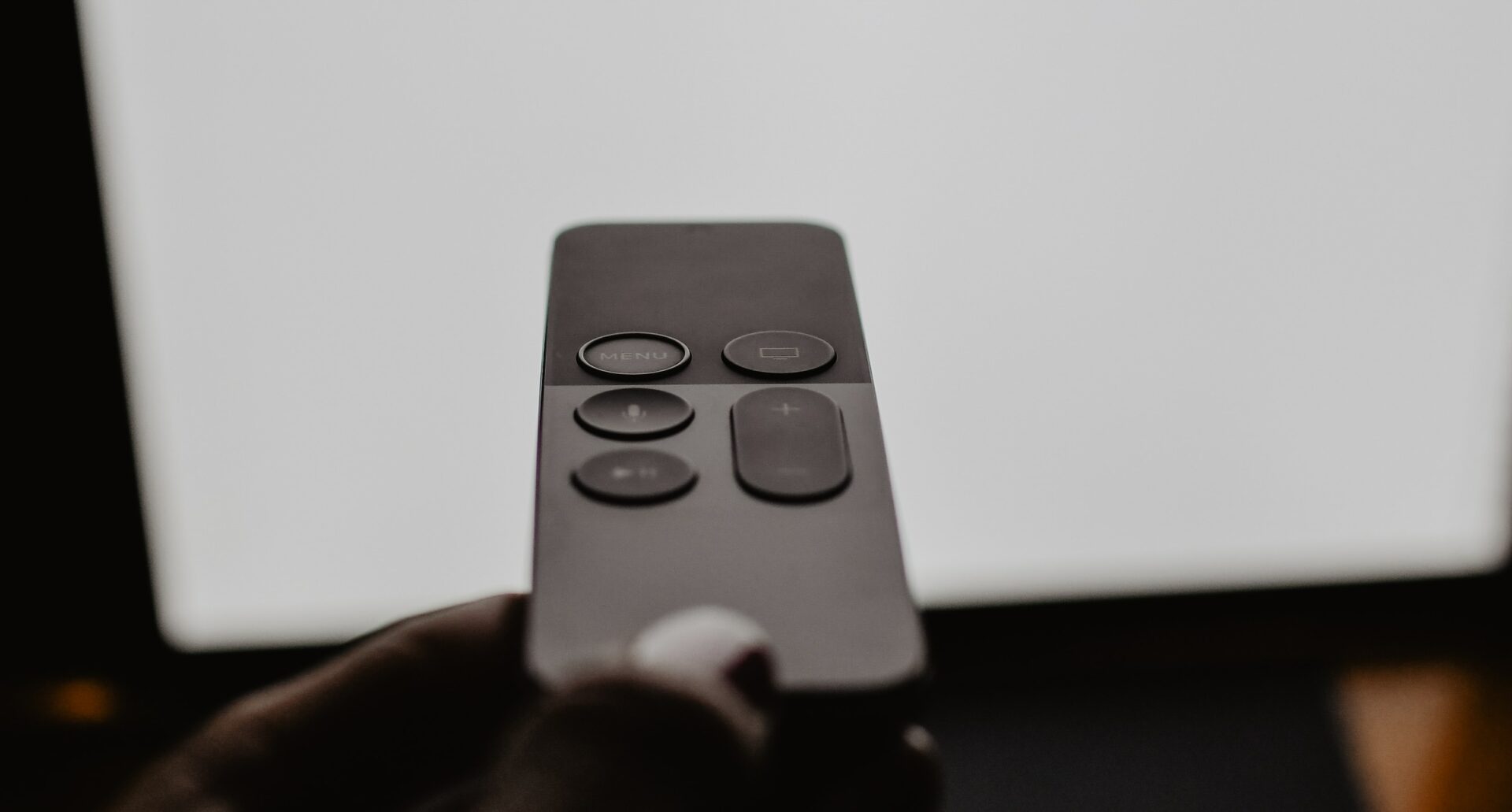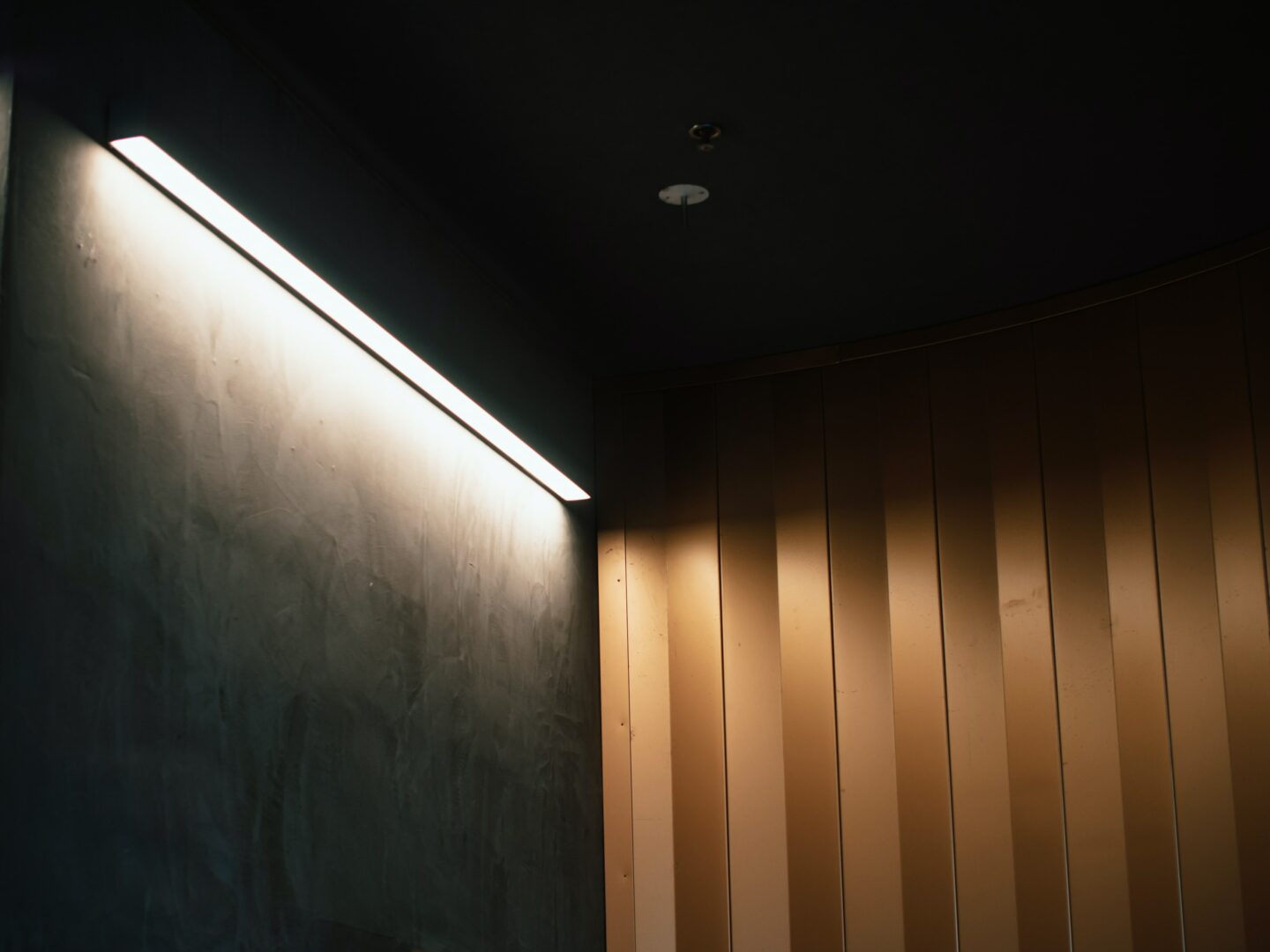Is It Better To Watch TV In The Dark Or With The Lights On? (Or…Ambient Lighting?)
Is It Better To Watch TV In The Dark Or With The Lights On? (Or…Ambient Lighting?)

Whether it’s with a sound bar system, or just using a pair of headphones, watching TV can be a fun experience.
However if you’ve ever watched for an extended period of time, you might have noticed that your eyes can start to ache.
Why does that happen?
Well it could be a number of reasons but one major reason could be the actual the lighting conditions in the room.
While it’s certainly easier to see the details on screen in the dark, well-lit rooms can be easier on the eyes.
So is it better to watch TV in the dark or with a light on?
Let’s find out!
Is It Better To Watch TV in The Dark Or With A Light On?
While it’s better to watch TV with a light on rather than in the dark; the best way is to use bias/ambient lighting. Watching TV in the dark can strain your eyes over time, while watching in bright lighting can reduce image quality and cause reflections. Ambient lighting at 15 percent the max brightness of your TV is best.
Reasons You’d Watch TV In The Dark
It’s More Cinematic

One reason why someone might prefer watching TV in the dark is it’s more cinematic.
If you’ve ever been to the movies, you’ll notice that the lights are turned off once the movies start.
This allows for the main focus to be the screen with no distractions from anything else.
It gives things a more cinematic feel.
Watching TV in the dark also allows for better picture quality since you don’t have to worry about light pollution from external lights reducing screen visibility or picture quality.
No External Lights Reflecting On Screen
Another reason someone might want to watch TV in the dark is not having to worry about external light sources reflecting on the screen.
If you’ve ever watched TV in a brightly lit room and the television has a reflective panel, then it’s hard to miss all the different light sources reflecting on the screen.
Reflections from the room can very quickly diminish picture quality and the experience overall, so it’s understandable why someone would prefer this.
Of course you always have the option of trying to angle the light source away or even using a screen with a matte finish — but there’s still going to be some amount of glare there which can be distracting.
Reasons You’d Watch TV With A Light On
Easier To Watch Over Longer Periods Of Time
On the flip side, there’s also a few reasons why someone might prefer watching their content with the light remaining on.
One such reason, and probably one of the biggest, is when watching content for hours, it can often be easier with sufficient lighting in the room.
The problem with viewing a brightly lit screen in a dark room is that your pupils will dilate to accommodate for the darker environment.
However because of the bright screen, your eyes would also be presented with more light — and the discrepancy between light and dark over time could cause things to be visually harsh.
When the surrounding environment is illuminated however, this problem may be mitigated.
Can See Your Surroundings Easier
Yet another benefit to watching TV with the lights on is you can see your surroundings easier.
Should you need to get up for whatever reason, you won’t have to worry about not seeing where you’re going as opposed to if you just watched in the dark.
This is also one of the bigger differences with watching movies at home vs at a theater since you have the ability to leave your lights on if you choose to.
Best Lighting For Watching TV

So then with all of that said, what is the best lighting for watching TV?
Is it better to watch in the dark or with the lights on?
Well a mix of the 2 actually.
The problem with watching in the dark like we mentioned earlier is that your eyes might start to strain after a bit due to the difference between light and dark in the room.
However watching with shining bright lights can reduce image quality which is also not optimal.
So the best way to go about it is the usage of some kind of ambient or bias lighting.
Bias lighting can basically help decrease the perceived brightness between the content being shown on your TV and the current lighting in the room.
It can often be easier on the eyes, and if done right, can help improve the look of black levels and overall dynamism of the image your viewing.
Plus it can just make the room look awesome in general.
To get your ambient lighting right though, you’ll want to use a light that’s not to bright but is still somewhat visible.
This is so it still benefits the image without actually calling attention to itself.
The color temperature of light is also important as this will help bring out the best in your display as well.
This will typically be measured in a number denoted by Kelvins — and the higher this number, the cooler the light will look & vice versa.
6500Kelvin is what’s typically recommended as this is the accepted standard for optimal picture quality.
For ambient lighting, I found the following option to be a good one in my opinion.
Of course, there’s some people that may still prefer their ambient lighting to be a specific color from a subjective standpoint, so for that purpose, I’ve found these work pretty well in that regard.
Eye Strain While Watching TV
With extended viewing, the chances for experiencing eye strain could potentially rise so is there’s a few things to mention in that regard.
Obviously it’ll depend on the person and their viewing habits, but some sort of ambient or bias lighting like we previously went over may sometimes be helpful.
Bias lighting helps to minimize the juxtaposition between light and dark in the room so it might give your eyes an easier time with watching content.
There’s also the option of turning down the brightness on your TV since televisions will typically come factory set on the brightest possible mode.
Calibrating your display can certainly help, and turning down the backlight can be an easy way to make viewing content more manageable.
Finally there’s also accounting for bluelight exposure.
Bluelight is something that we experience from nearly every light source however too much of it may have an affect too.
Using blue light glasses are often thought to help in regards to eye fatigue that’s often common with looking at screens for long periods of time but there’s many variables in general.
Final Thoughts
Hopefully this helped clarify what lighting conditions are best when watching your content, along with why exactly that is.
There’s of course always preference, but ambient lighting always tend to give the best balance between viewability and immersion in my opinion.
Until next time, make it easy, keep it simple!
About Me

Jay
Hey everyone it’s nice to meet you. I'm Jay, writer & founder of the site Easy Home Theater. I've been with this hobby of home entertainment for many years now. I decided to create this site to be a helpful resource, and share everything that I've learned from personal experience with you. I also happen to be a huge gamer, lover of all things tech related, and a major fitness buff (love weightlifting)
Contact: Contact Jay
Facebook: https://www.facebook.com/Easyhometheater/
X: https://x.com/easyhometheater
Pinterest: https://www.pinterest.com/easyhometheater/pins/
Instagram: https://www.instagram.com/easyhometheater/
Followit: https://follow.it/easy-home-theater
Bluesky: https://bsky.app/profile/easyhometheater.bsky.social






Leave a Reply